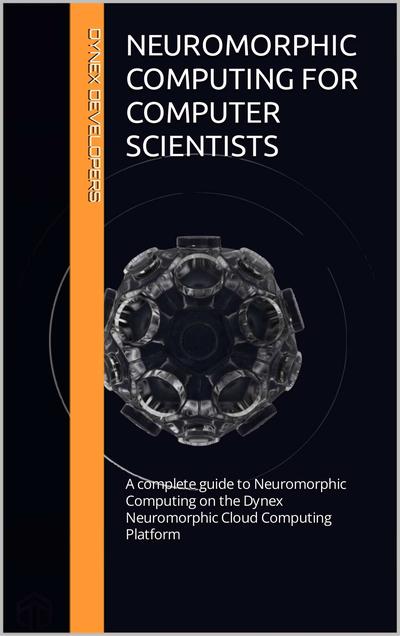
English | 2024 | ISBN: 979-8874281304 | 249 Pages | EPUB, MOBI | 10 MB
Neuromorphic Computing for Computer Scientists: A complete guide to Neuromorphic Computing on the Dynex Neuromorphic Cloud Computing Platform
In 2019, Google astounded the world with the revelation that their quantum computer, Sycamore, had conquered an insurmountable problem. Remarkably, Sycamore achieved this feat in less than 200 seconds, a task that conventional computers, even the most potent ones, would require over 10,000 years to complete. While this achievement was truly impressive, one might ponder why it holds such immense significance.
The answer lies in the profound implications of this breakthrough technology. Quantum computers have the potential to redefine the landscape of scientific discoveries, catalyze advancements in medicine, usher in a new era in artificial intelligence, and even play a pivotal role in averting catastrophic climate change. Yet, despite its remarkable promise, the widespread availability of quantum computers, in terms of qubit quantity, error-correction capabilities, and accessibility for practical applications, remains likely centuries away.
Enter neuromorphic computing, a comparably groundbreaking alternative computing paradigm, accessible today and boasting similar efficiency, without the constraints associated with quantum computers. Neuromorphic circuits share fascinating similarities with quantum technologies, including the principles of superposition and quantum tunneling. This innovative approach is rapidly gaining momentum among researchers and leading global corporations, offering a powerful alternative. To put it into perspective, while Google’s Sycamore registers a Q-Score of less than 140, neuromorphic platforms like the Dynex Cloud attain scores of 15,000 or more.
In ‘Neuromorphic Computing for Computer Scientists,’ you will embark on an immersive journey into this cutting-edge field. This book is designed to be accessible yet rigorous, employing ideas and techniques familiar to any student of computer science, regardless of their mathematical or physics background. It begins with the fundamental prerequisites before delving into various facets of neuromorphic computing, viewed from a computer science perspective. Topics covered encompass computer architecture, algorithms, programming languages, theoretical computer science, cryptography, information theory, and hardware. The text offers practical examples, over two hundred exercises with solutions, and programming drills that breathe life into neuromorphic computing concepts. All code examples are runnable on the Dynex Neuromorphic Computing Platform, a cloud-based neuromorphic computing service.
‘Neuromorphic Computing for Computer Scientists’ invites readers to explore a realm of cutting-edge research, providing an engaging hands-on experience that simplifies intricate abstract concepts. This book is a valuable resource for computer science students and researchers, making the fascinating world of neuromorphic computing accessible to all.
HomepageResolve the captcha to access the links!